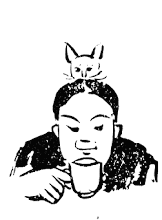从儿童看历史/ Children as History
A drawing by a seven-year-old girl. From Huang Yi, The Psychology of Children's Drawings (Shanghai: Commercial Press, 1937), fig. 18 “Developmental order”: A drawing by an eleven-year-old girl. From Huang Yi,The Psychology of Children's Drawings (Shanghai: Commercial Press, 1937), fig. 26 “Educational Toys” from the Commercial Press. From Eastern Miscellany 15, no. 12 (December 1918) Andrew F. Jones, "The Child As History in Republican China: A Discourse on Development" Positions: East Asia Cultures Critique 10.3 (2002) 695-727. The whole article in the Journal may be retrievable from the following link:


Figure 1 (Page 697)



